How to choose an engagement ring
He’s put a ring on it – things are about to get serious. We navigate you through the best approach when deciding how to choose an engagement ring, whether you’re a follower of tradition and adhere to the convention of proposing with a ring in hand, or prefer to go shopping together as a couple after the question’s been popped. Read on for the down-low on the important basics that you should be armed with before you start your search.Diamonds are a girl’s best friend
Choosing your perfect engagement ring is arguably as important as choosing your dress. And just like the dress, there are a million different styles, sizes and designs. Look, not everyone wants a diamond engagement ring. Some prefer semi-precious stones, family heirlooms, pearls or even plastic – it’s your ring, so choose whatever you love. However, there’s a reason that the diamond trade is booming.
 Diamonds are the hardest material on earth – virtually pure crystallised carbon – beginning their life in volcanoes, and, in their rawest form, are lumps of rock. It’s only once they’ve been transformed do we see the shine, fire and brilliance that is so commonly associated with engagement rings. The diamond market is ripe and booming, and while diamonds aren’t quite the rare commodity they were, they are still the most sought-after stones in the world.
Diamonds are the hardest material on earth – virtually pure crystallised carbon – beginning their life in volcanoes, and, in their rawest form, are lumps of rock. It’s only once they’ve been transformed do we see the shine, fire and brilliance that is so commonly associated with engagement rings. The diamond market is ripe and booming, and while diamonds aren’t quite the rare commodity they were, they are still the most sought-after stones in the world.
Thought once by Ancient Egyptians as the finger leading straight to your heart, engagement rings are traditionally worn on the third finger of your left hand – although some brides prefer to wear them as necklaces. The cultural significance of the engagement ring has changed over the ages, from the first ever ring given by the Archduke Maximilian in 1477, to the perfectly-shaped mouth of the Marquise of Pompadour inspiring the marquise cut diamond, to the invention of the eminently popular princess cut in the 1980s.
The five Cs
Heard of the four Cs? There are actually five: cut, colour, clarity, carat, and that ill-forgotten fifth, cost. Everyone has a budget, and even though diamonds don’t come cheap, it doesn’t mean you can’t find exactly what you’re looking for. The price of a diamond all depends on the level and grading of the ‘Cs’, which is widely determined by the International Diamond Grading System™ from the GIA (the Gemmological Institute of America).
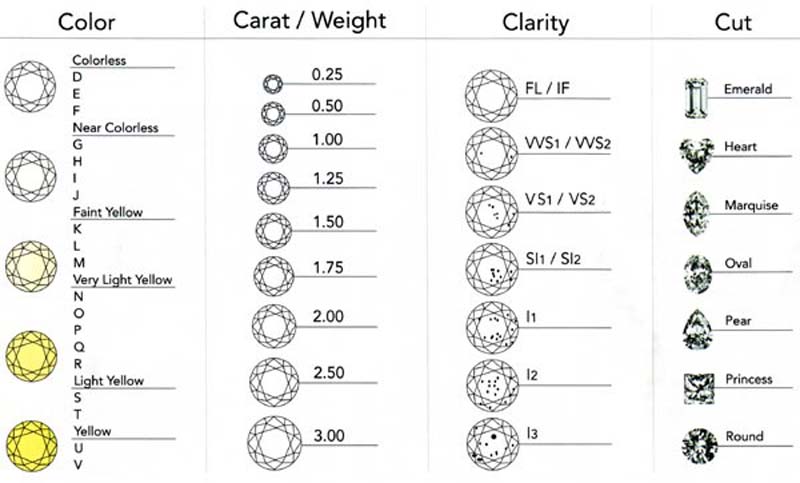 Always get a certificate for your diamond for insurance purposes (preferably from the GIA, but other reputable organisations include HRD, IGL, EGL and AGS). It can cost up to £400 to get your diamond certified independently, so if the diamond you’re interested in purchasing doesn’t come with a certificate, be sure to factor this into the overall price. GIA certificates are also the most credible in terms of ensuring you aren’t purchasing a blood diamond, although worryingly there is no real way of knowing if your diamond has been ethically sourced once it’s been cut.
Always get a certificate for your diamond for insurance purposes (preferably from the GIA, but other reputable organisations include HRD, IGL, EGL and AGS). It can cost up to £400 to get your diamond certified independently, so if the diamond you’re interested in purchasing doesn’t come with a certificate, be sure to factor this into the overall price. GIA certificates are also the most credible in terms of ensuring you aren’t purchasing a blood diamond, although worryingly there is no real way of knowing if your diamond has been ethically sourced once it’s been cut.
Cut
There are ten basic cuts, indicated below:
 |
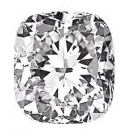 |
 |
 |
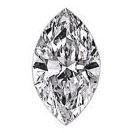 |
| 1. Asscher | 2. Cushion | 3. Emerald | 4. Heart | 5. Marquise |
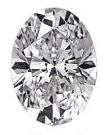 |
 |
 |
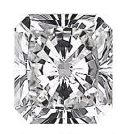 |
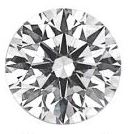 |
| 6. Oval | 7. Pear | 8. Princess | 9. Radiant | 10. Round |
The most popular cuts are the round, princess and pear, but you’ll see the others around if you look hard enough. Round cuts tend to be more expensive as there is more of the stone wasted in the cutting and shaping process, and the reflection of internal light (or the diamond’s ‘fire’) tends to be more brilliant. Princess cuts (square or rectangular-shaped) are more efficient as two equally-sized diamonds can be cut from the same stone, resulting in a lower price. Pear or oval cuts are popular shapes for elongating the finger.
Every diamond has 57 or 58 facets (small surfaces) and the way that these are cut affects how the light moves within the diamond. That’s why the cut is so important – if a diamond is cut badly, it will look less brilliant.
Keep an eye out for light movement, shine, definition and a perfectly-shaped stone.
Colour
When considering how to choose an engagement ring, you should seriously think about the colour of diamond you’ll be happy looking down at for the rest of your life. Diamond colours range from ‘D’ (brightest, colourless, rarest, most expensive) to ‘Z’ (very distinct colour, also very rare, also very expensive)! It depends what you’re after – bright and clear or a coloured diamond (usually yellow) known as a ‘fancy’.
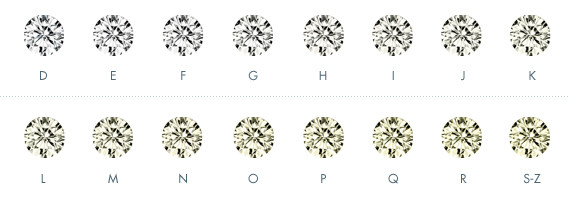 It’s easy to get obsessed with wanting a ‘D’, but in reality it all depends on the size of your stone. You can get a 0.75 carat diamond at a ‘G’ grade that looks perfectly white, but anything over a carat may look a little more dull. You may also want a more vintage-looking mount, which would look strange with a bright, blingy diamond in the centre.
It’s easy to get obsessed with wanting a ‘D’, but in reality it all depends on the size of your stone. You can get a 0.75 carat diamond at a ‘G’ grade that looks perfectly white, but anything over a carat may look a little more dull. You may also want a more vintage-looking mount, which would look strange with a bright, blingy diamond in the centre.
Clarity
Most flaws are indiscernible to the naked eye, which is why I would recommend you compromise on clarity to get the size and colour diamond you want. It’s only if you look down a loupe (magnifying glass) will you be able to see small patterns known in the trade as ‘inclusions’. These are invisible to the naked eye.
 Personally, I think these flaws make a diamond all the more rare and unique to you. The most expensive is known as ‘IF’ or ‘Internally Flawless’ while the worst is ‘I3’ or ‘Imperfect 3’, but again, the size of the stone will affect how many of these inclusions actually matter.
Personally, I think these flaws make a diamond all the more rare and unique to you. The most expensive is known as ‘IF’ or ‘Internally Flawless’ while the worst is ‘I3’ or ‘Imperfect 3’, but again, the size of the stone will affect how many of these inclusions actually matter.
Carat
OK, so we’re onto the important stuff now: the carat. Carat measures the weight and size of a diamond, with the average size of engagement rings ranging between 0.5 and 1 carats.
When I first started looking for engagement rings, I was obsessed with the carat size. I wanted 1, 1.5, even 2! But I quickly learned that there were ways in making a smaller carat look larger (hello halo) with a clever mount and thin band. Ultimately, the larger the carat, the more you’re going to have to worry about colour, clarity and importantly, cost.
A quick tip: remember to ask about the carat count of the small diamonds in the mount (if there are any) as this can affect the overall value. The centre stone on my engagement ring is 0.7 carats but the diamonds in the mount bring it up to almost a carat.
Cost
Set a budget and stick to it. Yes, diamonds can be expensive but as with anything, you’ll probably need to compromise somewhere to get exactly what you want.
I searched high and low in America, trying on rings ranging from $3,000 to $120,000. I was led to believe that I wouldn’t find what I was looking for (a large-looking, round cut, vintage-inspired ring) within my budget.
But I came home after a whirlwind holiday engagement, went straight to Hatton Garden and found exactly what I was looking for within a couple of hours. And yes, it was in my budget.
I can’t recommend Hatton Garden highly enough. Known as London’s ‘diamond district’, HG is a street filled with over 60 diamond retailers undercutting high street prices. There’s a crowd of family jewellers, little antique shops, hidden rooms and trade units, all willing to buy, trade, haggle and even make your own design for you. You start off by letting them know your budget so there’s no awkwardness, and they only show you the rocks you can afford, tailoring the ‘C’s to meet your budget.
Then it’s on to the fun bit: haggling. You should be looking to knock 10-20% off the ticket price at least. If a jeweller isn’t willing to play ball, leave. There are plenty of other shops out there. Just sit in silence for a while, examining the ring. I did this and got over 50% the ticket price!
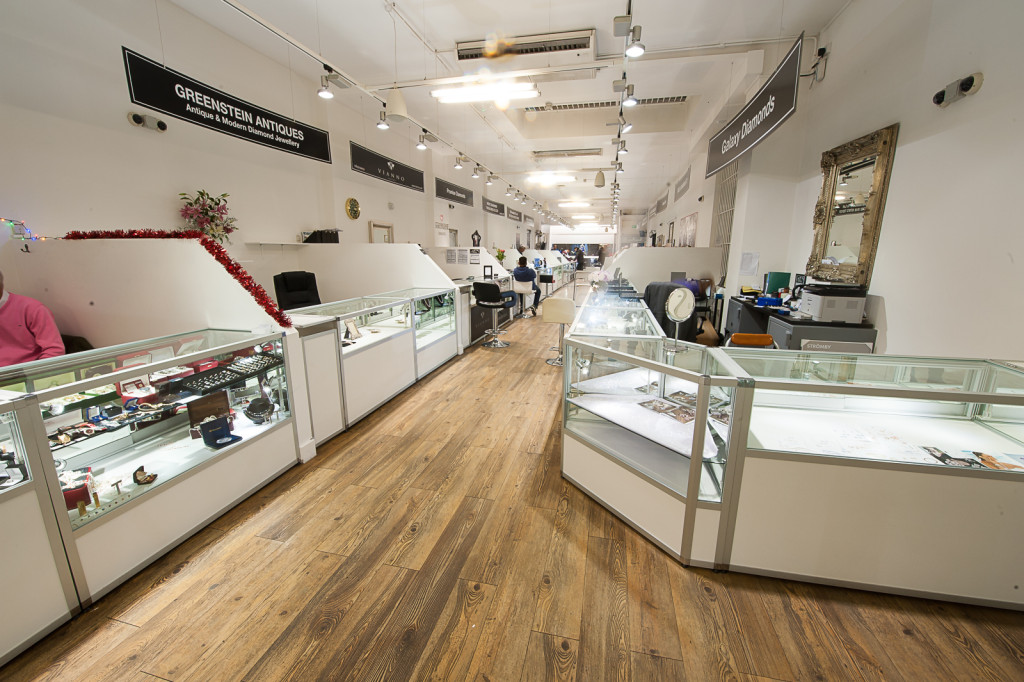 My ring doesn’t come from a shop; it comes from a booth/unit within a diamond centre called Boutique 36. The rent isn’t as high as the shops, meaning that they could afford to drop their prices lower than some of the other places I’d been in. My ring came with a GIA certificate, free re-sizing and free cleaning service, which is the least you should expect.
My ring doesn’t come from a shop; it comes from a booth/unit within a diamond centre called Boutique 36. The rent isn’t as high as the shops, meaning that they could afford to drop their prices lower than some of the other places I’d been in. My ring came with a GIA certificate, free re-sizing and free cleaning service, which is the least you should expect.
And for more information on how to choose an engagement ring…
- Look online, but don’t buy online. A diamond in pictures is nothing like a diamond IRL
- Shop around. Try rings on. The design of the mount can be just as important as the diamond itself
- Some diamonds (between 25% and 35%) emit ‘fluorescence’ – a visible light beneath UV rays. This has no bearing on the appearance of a diamond in normal light nor its structural integrity
- If you shop for a ring around Christmas or Valentine’s Day, prices are likely to be higher
- Get a GIA certificate
- Get a receipt of purchase
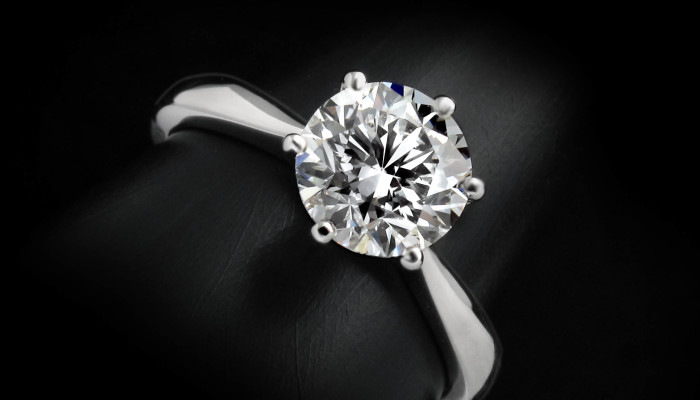
[…] The Ring […]